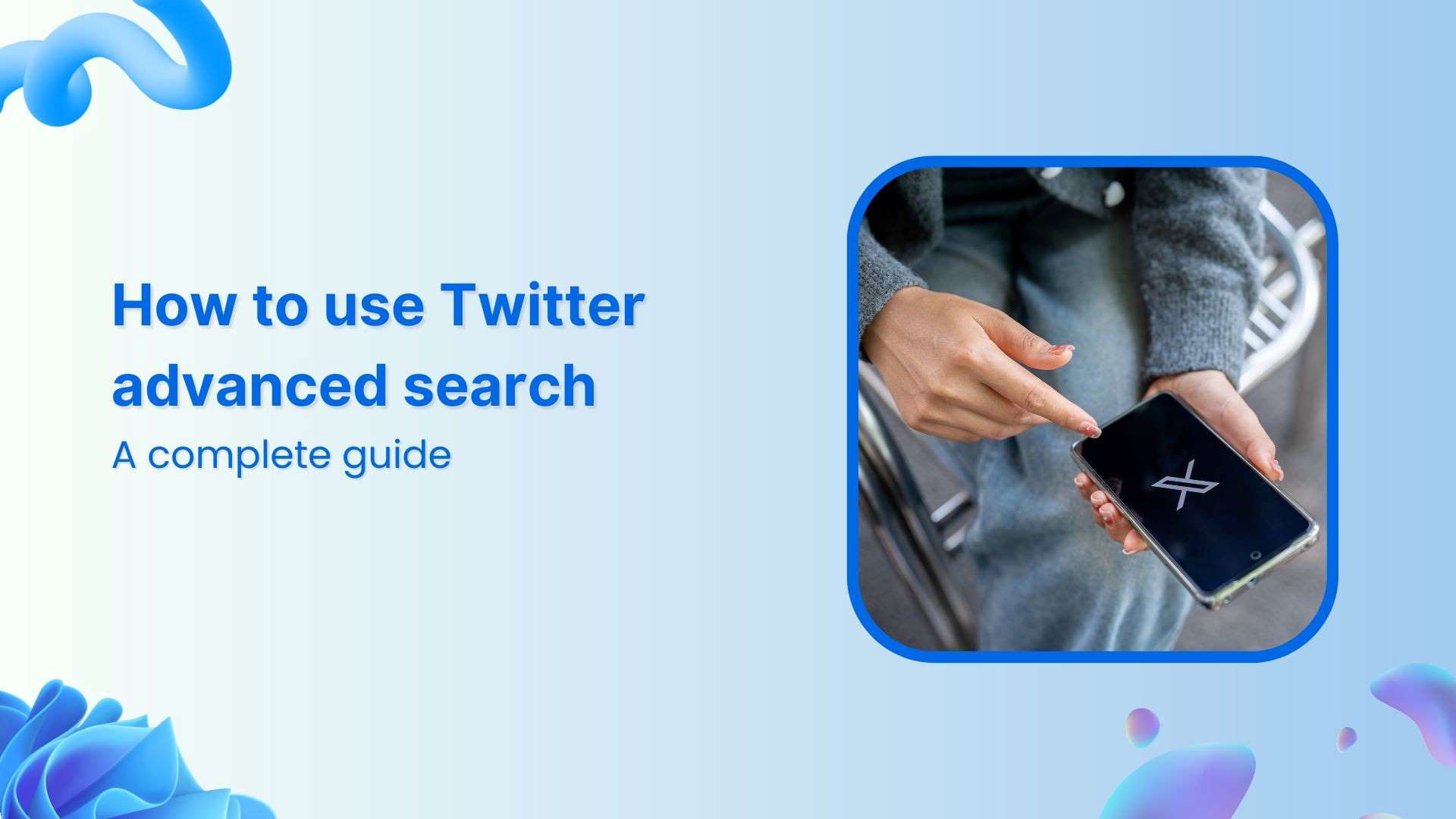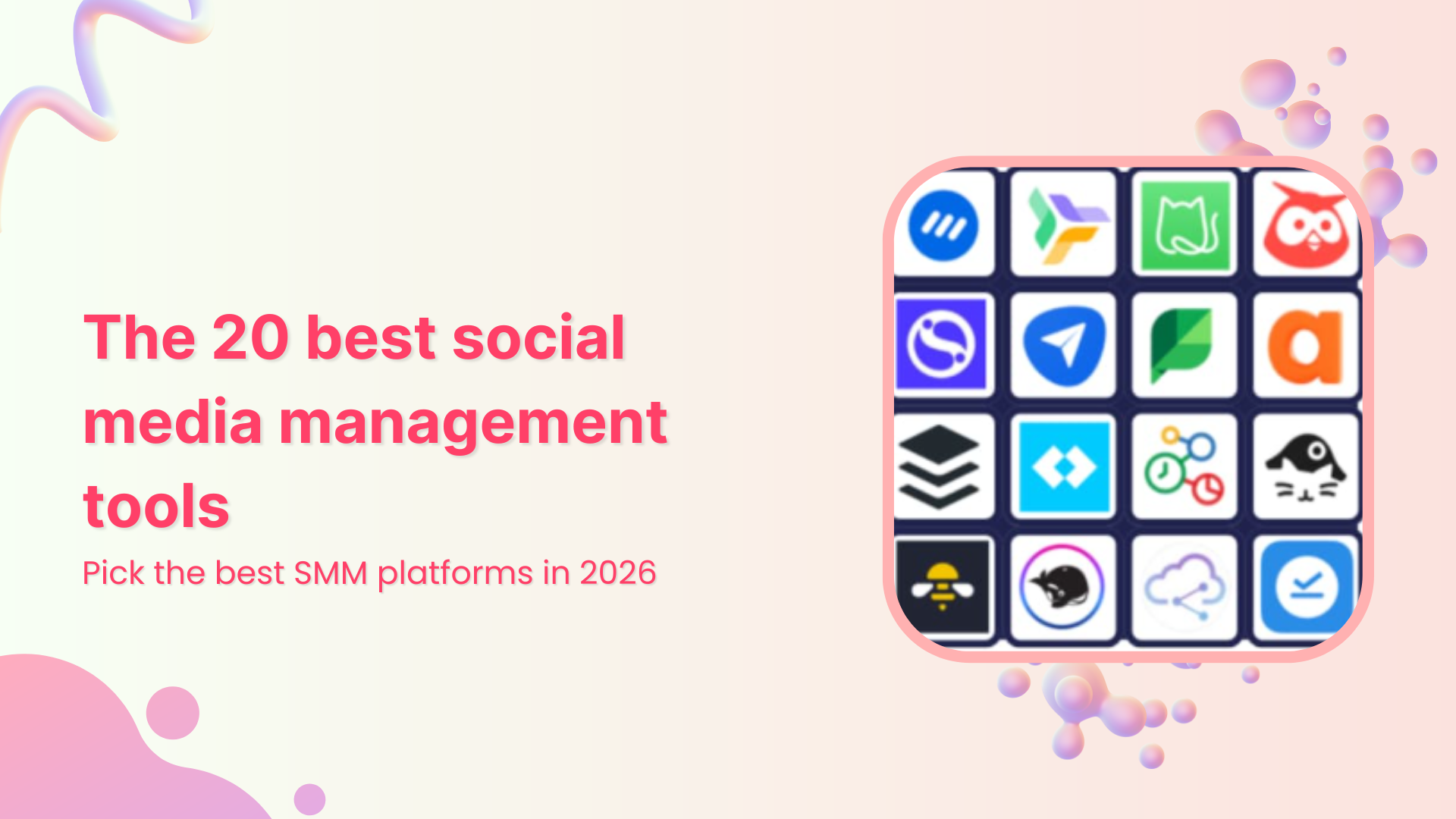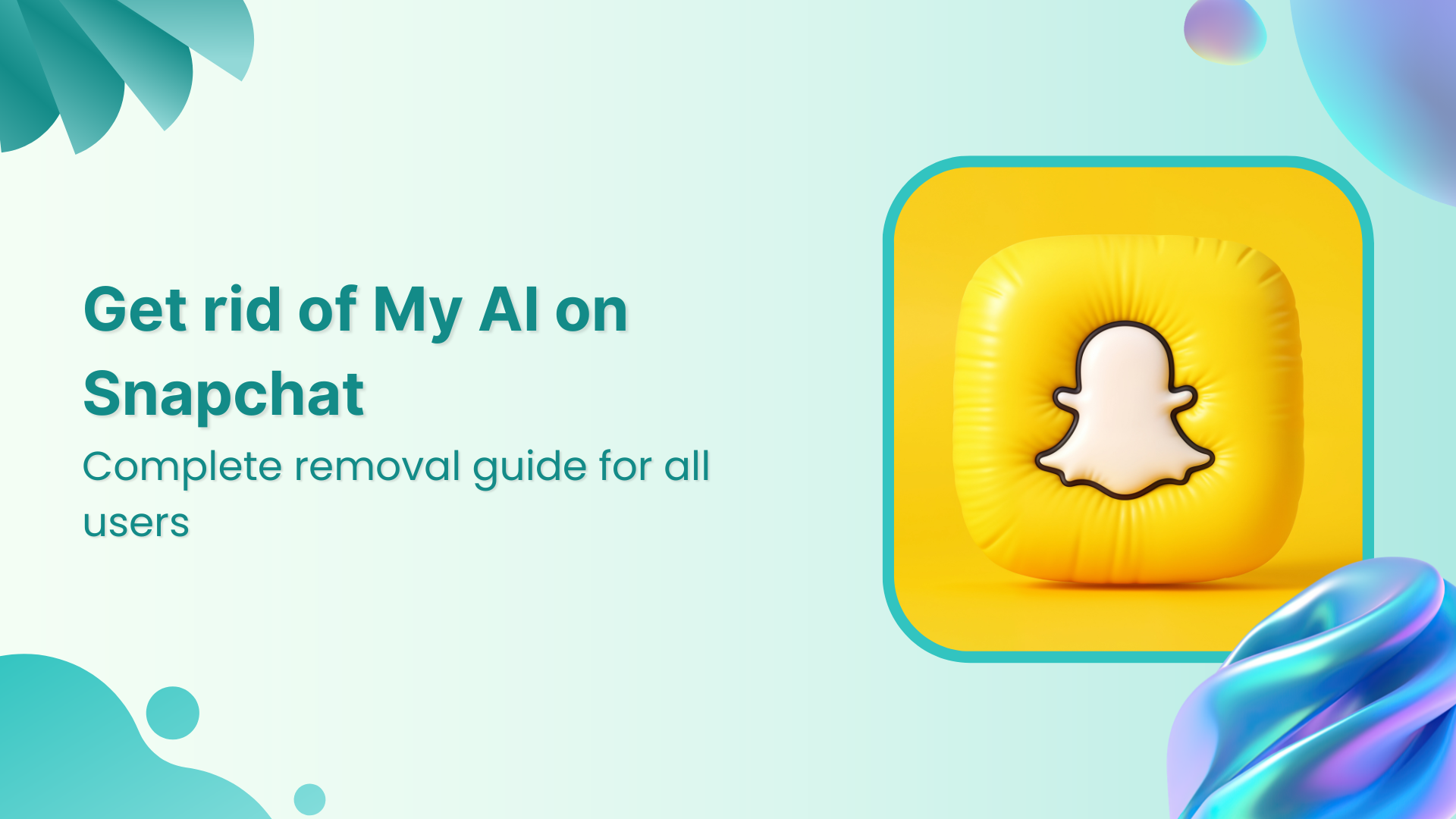Bulk-generate & schedule posts in seconds with Smart Scheduling. Try now!
Navigating SaaS social media marketing in 2025
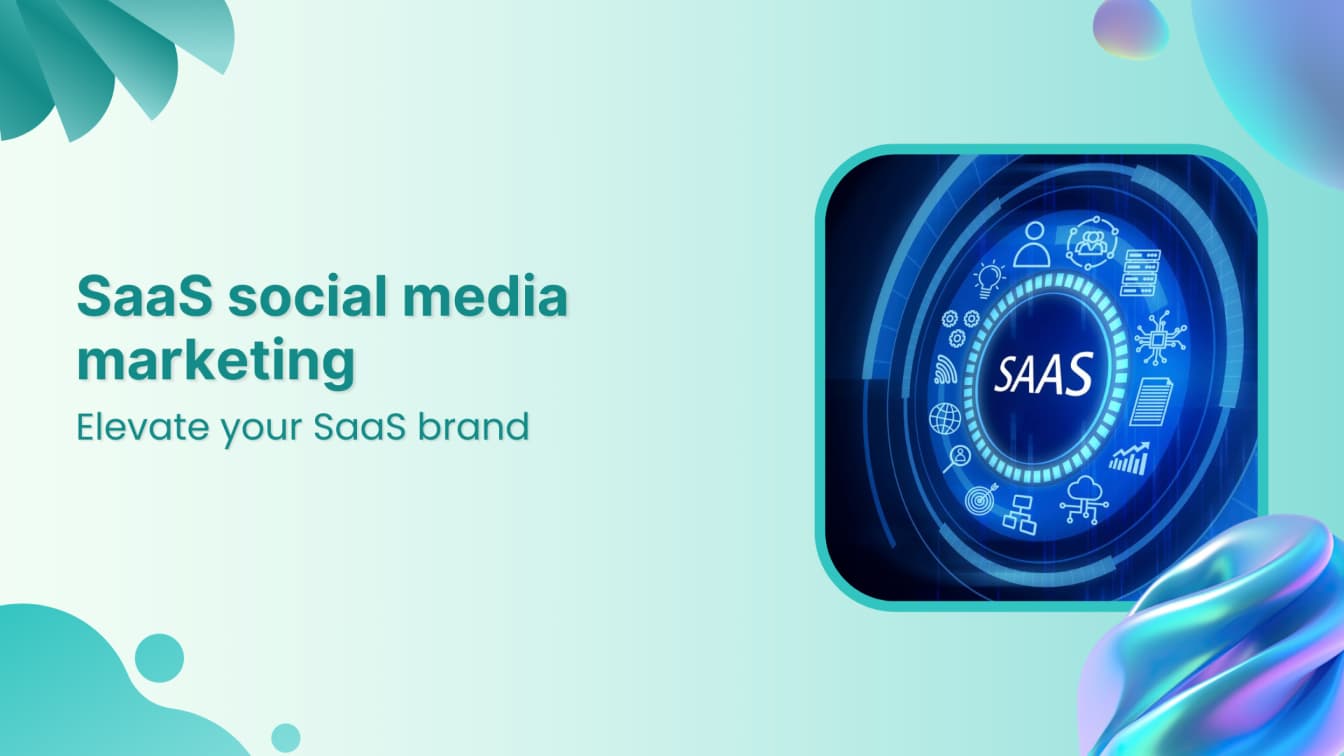
Heard the myths like “social media is not for SaaS”?
Well, the stats don’t lie – 5.22 billion people are on social media. Even in the world of SaaS, clients now expect to find companies online.
Still not sure?
Take Kinsta, a top WordPress hosting provider, for example. They’re getting over 700,000 views every month through social media.
But, diving into social media can be confusing. Facebook is busy, Reddit is like a maze, and Twitter is like a huge comedy club (especially with its rebranding to X).
To really stand out, it’s not just about trying hard – it’s about having a smart plan.
So, where should you start, and how do you make an impression?
Come with us as we explore SaaS social media marketing – we’ll show you effective strategies that go beyond the basics to make a real impact.
The easiest way to manage and grow your social channels.
Try ContentStudio for FREE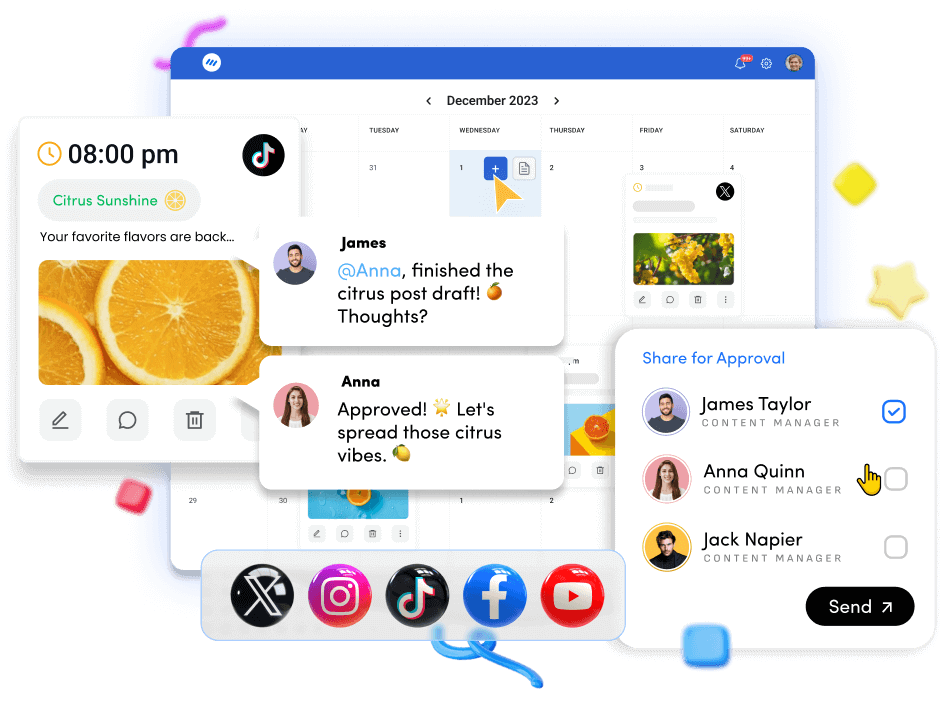
Significance of social media marketing in SaaS
Social media marketing is very important in the SaaS industry. It offers several benefits. These benefits can help SaaS businesses increase brand visibility. They can also help them reach potential customers and drive sales.
If you’re wondering why social media marketing matters for SaaS, here’s a clear reason: 76% of customers buy stuff they find on social media.
Now, let’s begin with why social media is a big deal for SaaS.
Increased brand visibility and reach
Social media marketing can significantly increase a SaaS brand’s visibility and reach. It allows businesses to connect with a broader audience. Think of it as making friends with many different types of people.
Let’s see a real example to make it clear why social media is like a superpower for SaaS.
One example of a SaaS company that has increased brand visibility and reach by using social media is Semrush. They utilized social media marketing to present the nightmares that digital marketers face and positioned themselves as the solution, effectively increasing their brand visibility and reach.
Take LinkedIn, for instance. They’ve got a whopping 368,000 followers. But it’s not just about pushing their features. They talk about market trends and fun facts in cool visuals, keeping users hooked.
Here’s the kicker: Their followers aren’t just users of their product. People interested in their social media strategy follow them, too.
Now, why does follower count matter for a SaaS product’s revenue? Simple. To stand out in your target audience (which is just 5% of the market), you’ve got to grab the attention of the whole 100%.
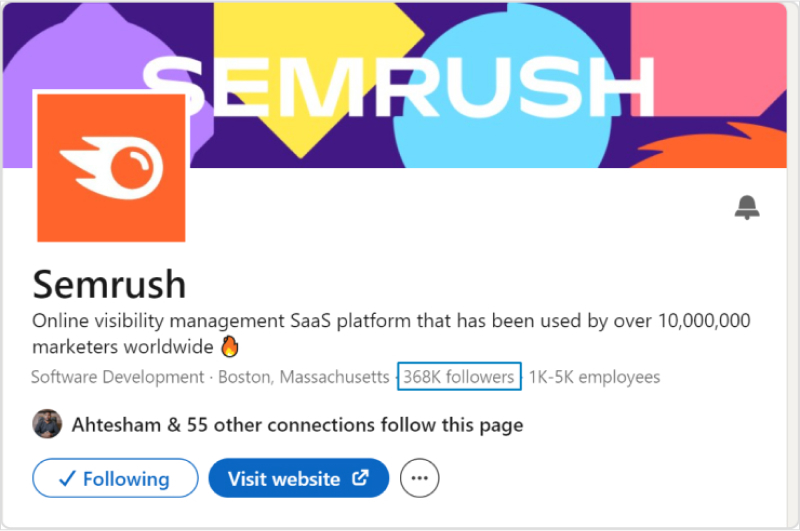
Higher conversion rates
A solid social media strategy can drive more visitors to a SaaS website. This can lead to higher conversion rates and better ROI from marketing efforts.
For instance, Zapier, a SaaS company, used a successful SEO campaign to generate 7.3 million organic visitors to their website per month.
They receive around 200,000 monthly organic visitors. This indicates a solid SEO strategy driving such substantial traffic.
Networking and engagement
Social media provides an ideal platform for networking and engaging with clients. It makes a SaaS organization readily available to its audiences. This ultimately influences purchasing decisions.
For example, Slack, a popular SaaS company, effectively engages and builds relationships with its audience on a daily basis.
If we look at X (formerly Twitter), they maintain multiple affiliate accounts. These cover various aspects of their product, such as Slack Design and Slack Status. They actively engage with these channels. They benefit not only themselves but also enhance the user experience.
Customer education and support
SaaS businesses can use social media to educate potential customers about their products. They can also help existing customers get the best out of the product.
For instance, ContentStudio is a leading SaaS company. They focus on creating content that educates the audience about the problems they solve and how they solve them.
Their YouTube channel has tons of videos and tutorials that are very helpful for using the tool and for the general perspective of learning.
Cost-effective advertising
SaaS brands can use social media to create a thriving community. It allows businesses to build stronger relationships with their audience.
For instance, Mailchimp is a leading SaaS company. They effectively leverage Pinterest as a B2B marketing channel. This helps the company build an engaged and loyal user community.
During the holiday season and sales period from October through November, approximately 16,000 users sent over 160,000 emails using generative AI.
Community building
Businesses can use social media to create a thriving community for a SaaS brand. This allows companies to build stronger relationships with their audience.
For instance, Shopify is a leading SaaS company. It effectively leverages Pinterest as a B2B marketing channel. This helps to build an engaged and loyal user community.
Understanding paid vs. organic social media marketing
Organic SaaS social media marketing
Organic social media marketing involves sharing free content on social media platforms to engage with followers, groups, and potential prospects. It aims to build brand awareness, engage and support customers, and educate the audience.
An example of organic social content for a SaaS business could be;
- Sharing customer success stories
- Industry insights
- Behind-the-scenes glimpses of the company’s culture.
This approach is cost-effective and focuses on building a network of engaged advocates over time, driving brand awareness, trust, and engagement.
For instance,
Asana is a project management SaaS company. They use an organic social media strategy. It focuses on sharing user stories and behind-the-scenes content.
They showcase how their tool is used in real-life scenarios. They feature success stories from various industries.
HubSpot has been a consistent user of Asana. They have openly expressed how it has transformed their approach to team alignment and organization in a single platform.
Additionally, Asana provides glimpses into their company culture. They introduce team members and showcase the work environment. This strategy humanizes the brand and builds a connection with the audience.
Paid SaaS social media marketing
On the other hand, paid social media marketing involves investing monetary resources to increase the visibility of posts to a targeted audience.
For a SaaS business, paid social media ads could be used to promote new product features, upcoming webinars, or whitepapers to a specific set of potential customers.
Unlike organic marketing, paid social media allows for precise targeting based on demographics, interests, and behaviors. While it can deliver quick results, it is important to note that the effects are short-term.
For instance,
Salesforce is a cloud-based CRM platform. It utilizes paid social media marketing. It runs targeted advertising campaigns on platforms like LinkedIn and Twitter. They tailor their ads to specific industries, showcasing the value of their CRM solutions for businesses in those sectors.
Additionally, Salesforce invests in promoting webinars on social media. They focus on thought leadership. They educate their audience about the latest trends in customer relationship management.
These examples highlight how companies like Asana and Salesforce use organic and paid social media marketing. They use it to connect with their audiences, showcase their products’ value, and drive engagement and leads.
Challenges for SaaS social media marketing
Challenge 1: Not knowing what customers need
In the big world of SaaS, it’s easy to get lost if you don’t really understand what your customers need. Take Richpanel, for example. They make software for online stores. Instead of just looking at numbers, they talked to the people using their software.
They found out that even if their software did a lot, it still wasn’t solving all the problems. By watching users closely, they fixed the real issues and made their software much better.
Solution! Get to know your customers
Source: Richpanel
Challenge 2: Ineffective customer communication
Sometimes, SaaS companies struggle to talk to people in a way that makes sense. Appknox, a company that keeps phones safe, had the same problem. Instead of using fancy words, they figured out how people search for things online.
Source: Appknox
They spoke to people using the same words those people used. By doing that, they got more people to understand what they do. It’s like talking to a friend, not using big words.
Solution! Talk to customers like you’re their friend
Challenge 3: Not putting offline ads
Not everyone who might love your software is on the internet. Skype knew this. They wanted everyone, even those who aren’t great with computers, to use their talking app. So, they didn’t just advertise online. They put ads where everyone could see them, even in newspapers.
GreaseBook, which helps with oil stuff, faced a similar challenge. Their customers aren’t always on the internet. So, they made their product so good that people talked about it to others. Word of mouth, like telling a friend, worked better for them than just putting ads online.
Solution! Find customers wherever they are
Challenge 4: Not using social media management tools
For SaaS companies, it’s really important to use social media tools. These tools help a lot with managing social media, and if companies don’t use them, they might face some problems. Here’s why these tools are so helpful:
Teamwork
They let many people work together at the same time.
Planning posts
You can plan when to post things and get them approved before they go online.
Save time
If you’re posting the same thing on Facebook, Twitter, and Instagram, you can do it all at once instead of three times.
Keep things organized
You can mark messages as done so your team doesn’t do the same thing twice.
Post at the right time
The tool tells you when it’s best to put up your posts.
So, if Saas companies don’t use these tools, they might miss out on making things easy, saving time, and keeping their social media game strong.
Pro Tip: Social media tools make things easier! Try ContentStudio
Now that you understand the importance of digital marketing for SaaS, it’s high time to give your software the social spotlight!
How to market your SaaS product on social media?
Learn how to market your SaaS product at every stage: before, during, and after launch. Create interesting messages, use eye-catching visuals, and interact with your audience on social media. Boost visibility with targeted ads and partnerships with influencers.
Follow these step-by-step strategies for the prelaunch, launch phase, and postlaunch that are essential for digital marketing for saas.
Strategies for prelaunch
Start early, post MVP: Initiate your social media campaign after developing a Minimum Viable Product (MVP). Use the time leading up to the launch to establish networks, redefine your brand identity, and fine-tune marketing messages.
Choose the right channels: Identify the social media channels that resonate with your target audience. Consider platforms like LinkedIn, Facebook, Twitter, Instagram, YouTube, Quora, and Reddit for SaaS social media marketing.
For Instance, PostNitro has strategically used LinkedIn to create awareness about their product before launch.
Research and inspiration: Investigate competitor strategies, get inspired by other companies, and understand your audience’s preferences.
Example: Look beyond direct SaaS competitors and find inspiration from successful tech companies. If a leading software company has a particularly engaging podcast series, consider starting your own podcast to discuss industry trends, product updates, and customer success stories.
Content variety: Choose diverse content types, including blog articles, memes, interviews, tips, customer testimonials, PR releases, polls, quotes, stats, videos, webinars, and more.
Example: In your SaaS company’s content strategy, incorporate a mix of blog articles for in-depth insights, meme-style content for a touch of humor related to industry challenges, customer interviews to showcase real use cases, and webinars for interactive learning sessions. This variety keeps your content engaging and caters to different preferences within your audience.
Social calendar: Plan a weekly content calendar, ensuring diversity and alignment with important dates and events relevant to your brand.
Example: Create a content calendar that includes a blog post every Monday, a meme or infographic on Wednesdays for a mid-week laugh, and a customer testimonial video every Friday. Align your content with industry events, product updates, and relevant holidays to stay timely and show your company’s active engagement with the industry.
By combining these strategies, the post-launch phase of your SaaS company can benefit from a well-researched, diverse, and consistently scheduled content approach. This approach helps in staying competitive, remaining innovative, and ensuring that your content resonates with the preferences of your target audience.
Strategies during launch
Open your channels: Set up your social media accounts with compelling bios, cover images, and profile pictures. Invite friends and contacts to build your community.
Build networks: Participate in meetups and forums related to your industry. Share relevant content in LinkedIn groups and on other channels. Connect with influencers, industry experts, and potential users. Building networks early on can create a buzz around your launch and establish your company within the social media community.
Create buzz: Showcase new features through short videos. Apply for Product Hunt to maximize visibility.
Advertising: Build and advertise to your target audiences, gathering leads and learning about their preferences. For a B2B SaaS product, consider advertising on platforms like LinkedIn to target professionals in relevant industries. Use Facebook and Instagram ads to reach a broader audience if your product has a B2C component.
Optimize messages: Continuously test and track the performance of different messages, formats, and topics on social media. If you find that a particular message or format performs exceptionally well, adjust your strategy accordingly to optimize your communication and better connect with your target audience.
Strategies for postlaunch
Refine content: Tailor your social media content based on insights gained post-launch. Share tips thought leadership articles, and engage in open discussions with followers.
After launching your SaaS product, analyze engagement metrics on your social media platforms. If you notice that your audience is highly interested in specific features or use cases, tailor your content to highlight those aspects.
Pro tip: You can use Usermaven to see where your traffic is coming from;
Social proof: Compile and promote testimonials and case studies on social media. Tag featured companies and decision-makers to expand your reach.
Product tours: Utilize detailed product tours on your website and promote them on social media to engage existing and potential clients.
For instance, ContentStudio promoted their new feature, chat AI, on social media.
Learn and optimize: Constantly collect insights and data to refine and optimize your social media strategy.
By implementing these strategies, you’ll maximize the impact of your SaaS product marketing on social media, driving engagement and success across all phases of your campaign.
Now, let’s see which social media channels you should use for effective SaaS social media marketing.
Which social media channels to use for SaaS marketing
When it comes to promoting your SaaS company on social media, it’s important to pick the right platforms. We’ll focus on four major ones: LinkedIn, Facebook, Instagram, and Twitter. Each has its strengths and reasons why it might be perfect for your SaaS social media plan.
LinkedIn: Connect professionally and build trust
LinkedIn is awesome for business-to-business (B2B) SaaS marketing. With nearly 1 billion professionals, it’s a hotspot for connecting with your audience, showing off your skills, and making friends.
It is the best platform for SaaS companies to share smart content and become a go-to expert in their field. You can also ask your team to share your posts to reach even more people.
Big players like Adobe and Salesforce shine here, building trust and making business buddies.
Facebook: Reach a Huge Audience and Build a Community
Facebook is the king of social media, with over 3.04 billion users. It’s a great place for SaaS marketing, letting you reach lots of people, share company updates, and even chat with your customers.
Create a business profile, post behind-the-scenes stuff, and keep everyone in the loop. Facebook Ads are handy for targeted campaigns. Check out your competitors’ ads and learn from them to make your ads stand out.
Instagram: Show your SaaS in action with visuals
Instagram, with its 2.4 billion users, isn’t just for pictures—it’s a rising star for B2B SaaS marketing. People spend a lot of time here, so make your content count.
Use your main feed for great pics and captions, stories for short-lived updates, and Reels for entertaining clips.
Like ContentStudio make Instagram work by showing off their team and cool features.
Twitter: Join conversations and use hashtags wisely
Twitter, with 353.9 million active users, is a versatile platform for SaaS. Its superpower?
Hashtags! Use them to join conversations and get noticed. Twitter’s fast pace means you can share updates industry news and chat with your audience in real-time. Post often and figure out when your followers are online to make the most impact.
Try Twitter Ads to get more people interested in what you’re doing, like Salesforce.
Choose the platform that fits your SaaS style. LinkedIn for serious connections, Facebook for a massive audience, Instagram for visually telling your story, and Twitter for quick, real-time interactions. Each has its own vibe, so find the one that clicks with your SaaS marketing goals.
Top 5 tools for SaaS social media marketing
Now the question is, which tool is best for your Saas?
Well, let’s make it easier! We’ve got a bunch of cool tools to share, starting with the star of the show – ContentStudio.
It’s like your trusty sidekick for social media magic. And wait, there’s more! We’ll also check out Replug, Hootsuite, Buffer, and Sprout Social. Each one’s got its own superpower to make your social media game strong. Ready to dive in and make your online presence shine? Let’s roll!
1. ContentStudio
ContentStudio is not just a tool; it’s your strategic partner in mastering the art of social media for SaaS businesses. This comprehensive platform seamlessly integrates content marketing and social media management, providing a suite of features to redefine your approach.
From content discovery and planning to AI-powered content creation, ContentStudio is your all-in-one solution to amplify your brand’s digital footprint.
Key Features:
- Content discovery: You can discover content ideas, see the hottest trends, and get an idea from various content forms from the content discovery feature.
- Social media automation: ContentStudio offers advanced scheduling, evergreen campaigns, RSS feeds, and CSV uploads, putting your social media on autopilot.
- Collaboration: It promotes teamwork in a collaborative environment, ensuring seamless content creation, approvals, and execution.
The most helpful and liked feature of ContentStudio is;
AI-powered content creation:
- AI writer: Overcome writer’s block with AI-generated captions and images for social posts.
- AI caption templates: Effortlessly create quality content with pre-made templates for Tweets, Instagram captions, quotes, and more.
- Generate hashtags: Boost post visibility with AI-suggested, trending hashtags for your content.
- Auto append emojis: Add a creative touch to your posts with emojis selected based on the text’s tone.
- AI generate images: Describe your vision and let the AI bot bring it to life with stunning visuals.
Other amazing features include;
Analytics: Gain deep insights into your social media performance with multi-channel analytics. Benchmark against competitors and create presentation-ready reports to showcase your success.
Unified social inbox: Manage and engage effectively with a unified social inbox. Assign conversations, add private notes, and use saved replies for quick responses.
Discover and curate: Stay ahead in your industry by curating top-performing content from the web, YouTube, and Twitter. Create custom topic feeds, control your news feed with an inbuilt RSS reader, and connect with influencers effortlessly.
Pricing of ContentStudio
ContentStudio offers a range of plans starting from $25 per month, catering to the needs of small to enterprise-level businesses.
Things are not finished yet; more features include
| Feature | Description |
| Network Tailored Posts | Create visually engaging posts customized for each social network standard. |
| Workspaces | Manage separate social activities for different brands to maintain individuality. |
| First Comment | Reverse the first comment for supplementary content on Facebook, Instagram, LinkedIn, and YouTube. |
| Canva & VistaCreate | Access Canva and Crello accounts within the composer for visually appealing posts. |
| Media Library | Organize and share reputable artwork by managing assets in personal media library. |
| Mobile Apps | Manage multiple social channels on the go with Android and iOS apps. |
| Feature |
| ✅ Twitter Threads |
| ✅ Google My Business |
| ✅ Media Integrations |
| ✅ AI Caption Generator |
| ✅ Hashtags Suggestion |
| ✅ Blog Publishing |
| ✅ UTM Tracking |
| ✅ Best Time To Post |
| ✅ Multiple Publishing Queues |
| ✅ Tasks Management |
2. Replug
Replug is a powerful link management and branding tool for social media marketers. It allows you to create branded short links, track click-through rates, and optimize your marketing strategies. With Replug, you can increase brand visibility and engagement by customizing your shared links with branded overlays.
Key features:
- Branded short links: Create custom short links with your brand name.
- Link tracking: Monitor the performance of your shared links.
- Call-to-action overlays: Add compelling overlays to encourage user engagement.
- Analytics: Gain insights into user behavior and optimize your campaigns.
- Bio links: You can create your own short page of your social links.
Pricing:
Replug offers pricing plans starting at $19 per month, making it an affordable solution for businesses of all sizes.
3. Hootsuite
Hootsuite is a widely used social media management platform that enables SaaS businesses to schedule posts, engage with their audience, and analyze social media performance. With a user-friendly interface, Hootsuite supports multiple social networks and provides a centralized dashboard for efficient management.
Key features:
- Social media scheduling: Plan and schedule posts in advance.
- Team collaboration: Collaborate with team members for seamless workflows.
- Analytics: Monitor social media performance with detailed insights.
- App integrations: Connect Hootsuite with other tools for enhanced functionality.
Pricing: Hootsuite offers various pricing plans, starting at $99 per month, with options for larger enterprises.
4. Buffer
Buffer is a straightforward social media scheduling tool that simplifies the process of posting and managing content across different platforms. Buffer’s intuitive interface allows SaaS marketers to plan, schedule, and analyze social media campaigns efficiently.
Key features:
- Social media scheduling: Easily schedule posts for multiple platforms.
- Analytics: Track the performance of your social media content.
- Collaboration: Collaborate with team members on content creation.
- Browser extension: Streamline content sharing with the Buffer browser extension.
Pricing: Buffer offers plans starting from free to $6 per month, making it a cost-effective choice for businesses of varying sizes.
5. Sprout Social
Sprout Social is a comprehensive social media management and analytics platform that caters to the needs of SaaS businesses. It provides tools for social media publishing, engagement, and analytics, allowing you to build and maintain a strong online presence.
Key features:
- Social media publishing: Schedule and publish content across platforms.
- Social listening: Monitor social media conversations and brand mentions.
- Reporting and analytics: Gain insights into your social media performance.
- CRM integration: Combine social media data with customer relationship management.
Pricing: Sprout Social offers pricing plans starting at $249 per user per month, making it suitable for businesses with more extensive social media KPIs.
These tools collectively offer a toolkit for SaaS social media marketing, providing features to enhance content creation, scheduling, engagement, and analytics. Choose the tool or combination of tools that best aligns with your specific business requirements and budget constraints.
Conclusion
The significance of integrating social media into your SaaS strategy in 2025 cannot be overstated. However, success hinges on constant adaptation and a deep understanding of evolving social media trends.
Embracing innovation, maintaining flexibility, and prioritizing customer engagement are crucial for businesses to navigate the dynamic landscape. By staying ahead of the curve, companies can maximize their impact and build lasting connections with their audience in this rapidly changing digital era.
Remember, it’s not just about being online; it’s about connecting. Cheers to making your SaaS stand out on social media!
FAQs
What is SaaS in social media?
SaaS in social media refers to Software as a Service applications designed for effective social media management, streamlining tasks such as scheduling posts, analytics, and audience engagement.
What is the best social media platform for SaaS?
The best social media platform for SaaS depends on the target audience and business goals, but LinkedIn is often considered effective for B2B SaaS.
Recommended for you


Powerful social media management software
14-day free trial - No credit card required.
